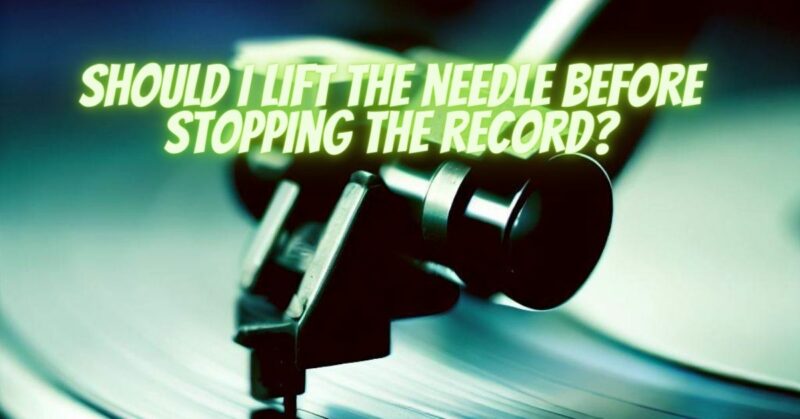Playing vinyl records is a tactile and immersive experience that involves several considerations to ensure the best sound quality and preserve your precious vinyl. One of the questions that often arises among vinyl enthusiasts is whether it’s necessary to raise the stylus (needle) before stopping the record. In this article, we’ll explore this practice, its potential benefits, and whether it’s a crucial step in vinyl care.
Understanding the Stylus and Grooves
To appreciate the significance of raising the stylus, it’s essential to understand the relationship between the stylus and the grooves on a vinyl record. When you play a record, the stylus tracks the grooves, reading the microscopic variations in the groove walls to produce sound.
The Debate: Raise or Don’t Raise
Proponents of raising the stylus before stopping the record argue that it helps prevent unnecessary wear and tear on both the stylus and the record. Here are the key points in favor of raising the stylus:
- Minimizing Groove Damage: When the stylus sits in the grooves without playing music, it can cause friction and wear on the vinyl surface. This wear, over time, can affect sound quality.
- Avoiding Unintentional Scratches: Accidentally dragging the stylus across the record’s surface while it’s not playing music can result in scratches and damage.
- Preserving Stylus Life: Constantly running the stylus over the same section of the record, especially when it’s not playing music, can contribute to stylus wear and shorten its lifespan.
On the other hand, some argue that the act of raising the stylus, especially during playback, can be potentially harmful. Here are the counterpoints:
- Potential for Misalignment: Manually lifting the stylus can be challenging and may lead to misalignment, causing the stylus to land incorrectly when you start playing again.
- Dust and Debris: Raising the stylus exposes it to dust and debris, which can then be transferred onto the vinyl when you lower the stylus again.
Best Practices
Considering both sides of the debate, it’s clear that there are potential advantages and disadvantages to raising the stylus. To strike a balance, here are some best practices for caring for your vinyl records and stylus:
- Use a Cueing Lever: Many turntables come equipped with a cueing lever or arm that gently raises and lowers the stylus. This is a safe and controlled way to avoid unnecessary wear when starting or stopping playback.
- Avoid Frequent Lifting: Try to minimize the number of times you raise the stylus during a listening session. Instead, let the record play through if possible, or use the cueing lever when necessary.
- Clean Your Records: Regularly clean your vinyl records to reduce the risk of dust and debris transferring to the stylus.
- Stylus Inspection: Periodically inspect your stylus for signs of wear and damage. If it shows excessive wear, it’s time to consider replacing it.
Whether or not to raise the stylus before stopping the record is a matter of preference and care. While there are potential advantages to doing so, it’s essential to consider the potential drawbacks and use proper techniques to minimize wear and tear. Ultimately, the goal is to strike a balance between enjoying your vinyl collection and preserving it for future listening pleasure.


